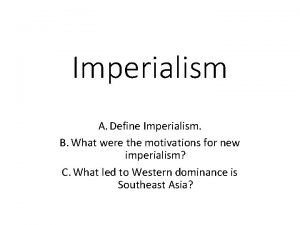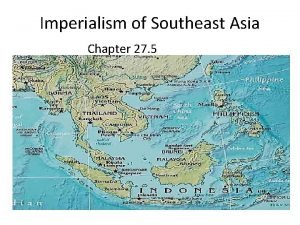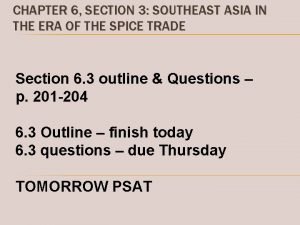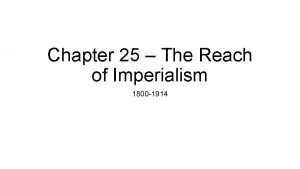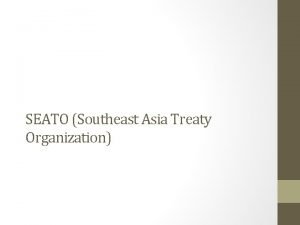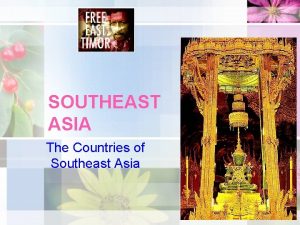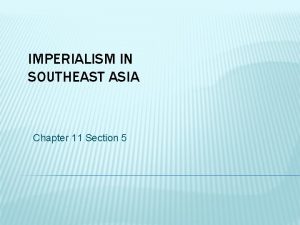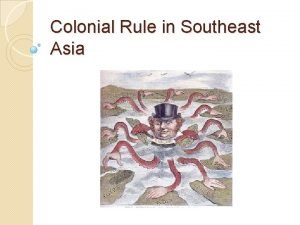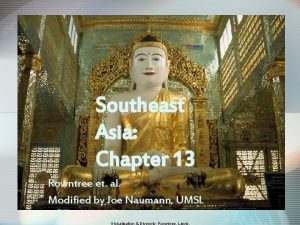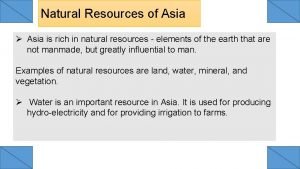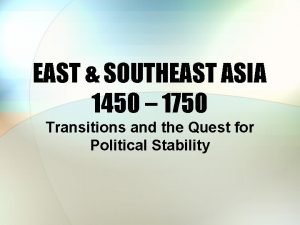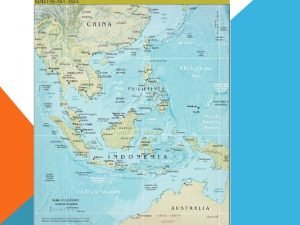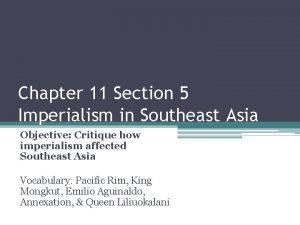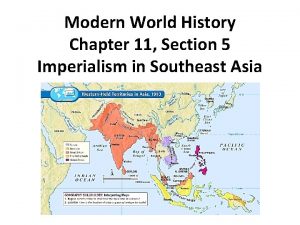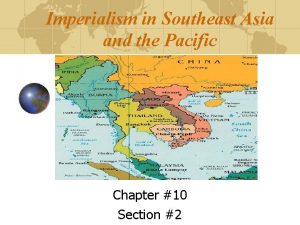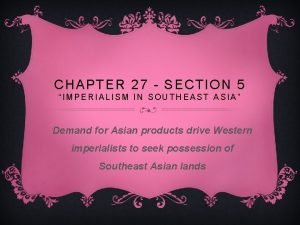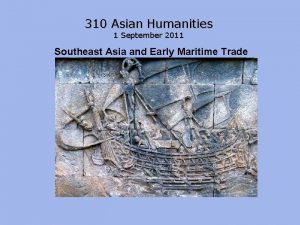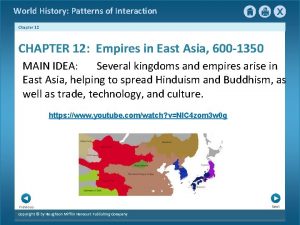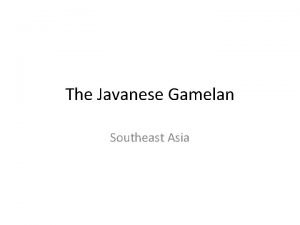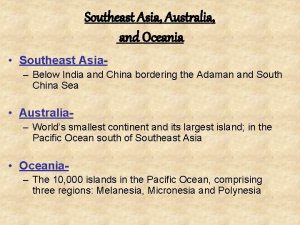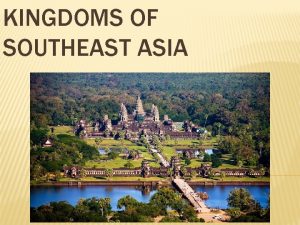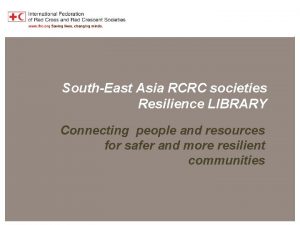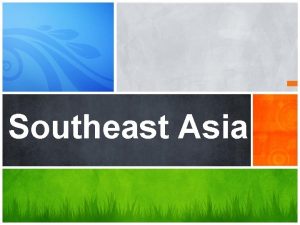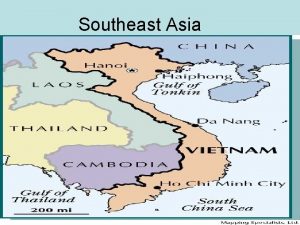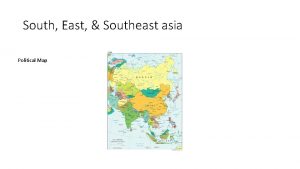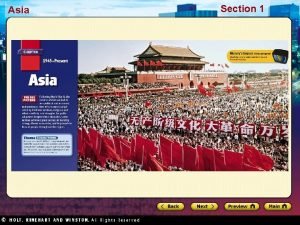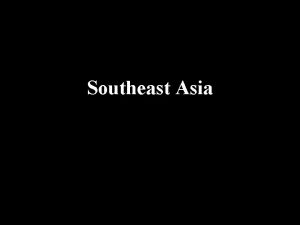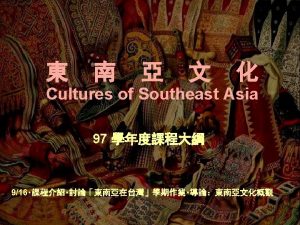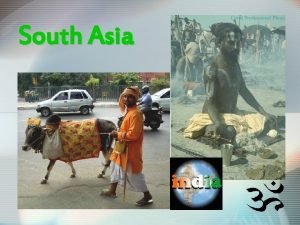Topic 1 3 Developments in South Southeast Asia

























- Slides: 25

Topic 1. 3: Developments in South & Southeast Asia c. 1200 to c. 1450 Unit 1: Global Tapestry

Historical Developments Hinduism, Islam, and Buddhism, and their core beliefs and practices, continued to shape societies in South and Southeast Asia. Beliefs and practices: ● Bhakti movement ● Sufism ● Buddhist monasticism

Historical Developments State formation and development demonstrated continuity, innovation, and diversity, including the new Hindu and Buddhist states that emerged in South and Southeast Asia. Hindu/Buddhist States: ● Vijayanagara Empire ● Srivijaya Empire ● Rajput kingdoms ● Khmer Empire ● Majapahit ● Sukhothai kingdom ● Sinhala dynasties


Monsoon Winds • Indian Ocean trade was made possible by monsoon winds • Winds blew eastward in summer and westward in winter • Understanding the monsoon winds along with better shipbuilding = increased trade

• The sea version of the Silk Roads • Until the discovery the new world, it was the largest sea-based system of communication and exchange • Stretched from southern China to eastern Africa • Cheaper to transport goods – cargo ships could carry more than camel caravans • Traded goods for a mass market rather than just luxury goods (like Silk Roads) – b/c of increased cargo capacity of boats

Srivijaya Empire (SREE-vih-juh-yuh) ● Emerged due to the competition between ports along the Malay Peninsula and the coast of Sumatra ● Dominated the critical choke point of Indian Ocean trade from 670 to 1025 ● Factors that led to their growth: ○ ○ ○ Plentiful gold supply Access to source of highly sought after spices (cloves, nutmeg, mace) Taxes levied on passing ships ● Created a bureaucratic government with military and naval forces that could secure the seas

Khmer Kingdom CHAMPA!!! Angkor Wat in Siem Reap, Cambodia is the largest religious monument in the world. Angkor Wat, translated from Khmer (the official language of Cambodia) literally means “City Temple. ” Khmer Southeast Asia 900

● Dedicated to the Hindu God Vishnu CONTEXT ALERT !

Prevailing Beliefs—Source PBS 2017

Hinduism-today’s 3 rd largest religion Where: South Asia When: Oldest Dharma (religion) What: Polytheistic No: Prophets, binding holy book, rituals, ecclesiastical body

Common concepts for Hinduism 1. Dharma-(ethics and duties) Dharma is the #1 goal for a Hindu. Live a good and righteous life. 2. Samsara- (Continuing cycle of birth, life, death and rebirth) We call this—reincarnation Nothing is higher than Dharma. The weak overcomes the stronger by Dharma, as over a king. Truly that Dharma is the Truth (Satya); Therefore, when a man speaks the Truth, they say, "He speaks the Dharma"; and if he speaks Dharma, they say, "He speaks the Truth!" For both are one. — Brihadaranyaka Upanishad, 1. 4. xiv [148][149]

Hinduism concepts 3. Karma- (Action, intent and consequences) 4. Moksha- (AKA Nirvana) The ultimate goal –depends what branch of Hinduism you practice. 5. Yogas- Different paths for life. Sanskrit—writing from Ancient India Vedas-Hindu Scriptures


Mohandas (Mahatma) Gandhi: History’s most famous Hindu

Hinduism—world’s oldest religion? Maybe ● Polytheistic ● No founder ● 3 principle Gods—Shiva, Brahma and Vishnu ● ARYAN invaders impose CASTE SYSTEM


The five stone towers are intended to mimic the five mountain ranges of Mt. Meru—the mythical home of the gods, for both Hindus and Buddhists. The temple mountain as an architectural design was invented in Southeast Asia.

1. Borobudur-Largest Buddhist temple on the planet 9 th Century-14 th Century (INDONESIA)

2. Bagan (collection of 10, 000 Buddhist temples) 8501287 CE (MYANMAR, PAGAN KINGDOM)

3. ANGKOR WAT, (Hindu temple transformed into a Buddhist Temple), 11501550 CE (CAMBODIA, KHMER EMPIRE)

4. Temple of Literature-Vietnam The temple was built in 1070 at the time of Emperor Lý Thánh Tông. It is one of several temples in Vietnam which is dedicated to Confucius, sages and scholar

5. The Tomb of Shah Rukn-e-Alam (Urdu: ﺭکﻦ ﺷﺎہ ﻣﻘﺒﺮہ ﻋﺎﻟﻢ located in Multan, Pakistan, is the mausoleum of the Sufi saint Sheikh Rukn-ud-Din Abul Fateh

6. QUTB MINAR, (240 feet tall Minaret), 1192 CE (DELHI SULTAN ATE)

5 ”Ya Basic” For South and Southeast Asia 1. South and Southeast Asia are primarily a place to focus on the convergence of three religions: ISLAM, HINDUISM, & BUDDHISM. 2. Focusing on these areas in this period (1200 -1450) is something super rare: THEY DEFEATED/DEFENDED AGAINST the MONGOLS!!! 3. India is dominated by Hinduism, but in this period (and the next: Mughal Empire) they will be ruled by Muslims: the Delhi Sultanate. 4. All of the big World Travelers hit up both SOUTH & SOUTHEAST Asia during this period: ZHENGHE, MARCO POLO, & IBN BATTUTA (he was a judge in the Delhi Sultanate for 7 years!) 5. Sadly, this is the end of independence in this area for a looooong time. In 1498, Portuguese conquistador Vasco da Gama opens the door for the Europeans to begin their domination of this region
 What led to western dominance in southeast asia?
What led to western dominance in southeast asia? Imperialism in southeast asia chapter 27 section 5
Imperialism in southeast asia chapter 27 section 5 In 1500 mainland southeast asia was a relatively
In 1500 mainland southeast asia was a relatively Chapter 25 lesson 1 colonial rule in southeast asia
Chapter 25 lesson 1 colonial rule in southeast asia Countries in southeast asia
Countries in southeast asia Southeast asian urban model
Southeast asian urban model Southeast asia treaty organization
Southeast asia treaty organization Insular southeast asia
Insular southeast asia Chapter 11 section 5 imperialism in southeast asia
Chapter 11 section 5 imperialism in southeast asia Colonial rule in southeast asia
Colonial rule in southeast asia Chapter 15 lesson 1 physical geography of north africa
Chapter 15 lesson 1 physical geography of north africa Chapter 21 section 1 landforms and resources answer key
Chapter 21 section 1 landforms and resources answer key Countries in southeast asia
Countries in southeast asia Malaysia rich in natural resources
Malaysia rich in natural resources Southeast asia 1450 to 1750
Southeast asia 1450 to 1750 Southeast asia climate
Southeast asia climate Buddhism and chinese culture
Buddhism and chinese culture Imperialism in southeast asia chapter 27 section 5
Imperialism in southeast asia chapter 27 section 5 Wallace's line
Wallace's line Customs lawyers southeast asia
Customs lawyers southeast asia Chapter 11 section 5 imperialism in southeast asia
Chapter 11 section 5 imperialism in southeast asia Imperialism in southeast asia and the pacific
Imperialism in southeast asia and the pacific Imperialism in southeast asia chapter 27 section 5
Imperialism in southeast asia chapter 27 section 5 Weaving the web of an indian ocean world
Weaving the web of an indian ocean world Southeast asian alphabets
Southeast asian alphabets Chapter 12 section 5 kingdoms of southeast asia and korea
Chapter 12 section 5 kingdoms of southeast asia and korea
